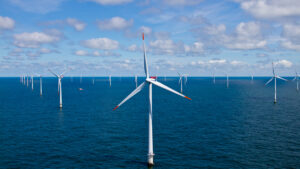Following the news that Hanwha Ocean signed a US$600 million contract with the South Korean state defense procurement agency to build two next-generation frigates, Tushar Mangure, Defense Analyst at GlobalData, a data and analytics company, offers his view.
“The construction of the next-generation FFX Batch-III frigates is part of South Korea’s naval modernization strategy, which is mainly aimed at countering the increasing threat posed by North Korea’s new ballistic missile-armed submarines.
“The new FFX Batch-III frigates will also help South Korea increase its military presence and counter the Chinese naval expansion in the East Asia region. The new frigates will be built by Hanwha Ocean to replace the Ulsan-class vessels that were inducted in the early 1990s.
“According to GlobalData’s Global Naval Vessels and Surface Combatants Market 2023-2033 forecast, South Korea is estimated to spend approximately $19.4 billion on the procurement of various categories of naval vessels over the next ten years. The contribution of the frigate segment to the country’s overall naval vessel market is expected to be around 25%.
“The high level of indigenization due to the presence of a robust shipbuilding infrastructure has proven South Korea to be a major exporter of naval platforms worldwide, with domestic companies like Hanwha at the forefront.
“Over the last decade, North Korea has significantly strengthened the operational capabilities of its missiles and naval force. Even though North Korea tends to exaggerate the capabilities of its military, devising an effective strategy to detect and neutralize the submarines is of utmost importance for South Korean policymakers.
“The FFX Batch-III frigates will be equipped with a wide range of indigenous sensors and weapon systems to effectively undertake anti-submarine roles and deter underwater threats originating from North Korea.
“The incorporation of a state-of-the-art hybrid propulsion system consisting of electric and gas turbine modes will enable the frigates to achieve a high degree of acoustic stealth essential for conducting anti-submarine warfare. They may also be integrated with unmanned underwater vehicles (UUV) for conducting anti-submarine operations.
“These specifications clearly indicate South Korea’s focus on safeguarding its territorial waters against complex and varied underwater threats by deploying modern naval platforms.”
Photo credit: iStock/Gerasimov174










